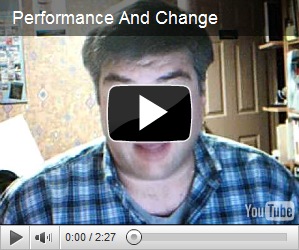Over the past weeks I’ve come in touch with several companies with the same exact challenge. Though, to be sure, it’s nothing new. I encounter this challenge several times each year. Perhaps, even following Pareto’s principle, 80% (or more) of the companies coming to me for improved processes have a variant of a form of distress that accounts for no more than 20% (or less) of the possible modes of distress.
In particular, the challenges are variants of a very basic problem: they want things to change but don’t have an objective performance capability to aspire towards. Put another way, they can’t articulate what it is that their operation cannot currently accomplish that they’d like their operation to be able to do once the changes are put in place.
I’ve mentioned “SMART” objectives before. Here’s another application of those same objectives, only now, they show up at a higher level within the organization.
Executives of the organization often confuse “SMART” objectives with “fuzzy” objectives. By “fuzzy” I mean objectives that appear to be “SMART” but aren’t, and, the fuzziness obscures the situation so as to over-render the truly uninspiring nature of the objectives as being substantial accomplishments. In fact, fuzzy objectives are not actually objective (lacking a solid way to measure accomplishment), or, are easily “gamed” (data or circumstances can be manipulated), or, are very deep within their comfort zone – or the opposite – are ridiculously unreachable (achievement is too easily attained or excused for not attaining), or, are indicators of task completion rather than indicators of actual outcome changes (don’t actually achieve anything but give the appearance of making progress), or, aren’t tied to actual increased capabilities/performance (don’t cause anything to change that anyone cares about), or, are dubious achievements that can be accomplished by simply “rowing faster” (working harder by working longer hours or assuming too much risk or technical/managerial debt), and so on.
These same “fuzzy” objectives are frequently couched in deceptively goal-esque achievements such as achieving a CMMI rating, or “getting more agile”, or getting ISO 9000 registered. What I noticed among the recent crop of companies with these issues is that they shared a particular set of attributes. They were after “improvements” but didn’t know what they wanted these “improvements” to enable them to do in the future that their current operation was preventing them from accomplishing. Sure, as in the case of CMMI, achieving the “objective” of a rating would enable the company to bid on work they currently can’t bid on, but that’s a problem addressed in two separate posts (here and here) from a while ago.
Digging a little further, I uncovered a more deeply-seated challenge for these same companies. In each case, they could not articulate what they actually wanted to be when they “grow up”. Closely related to not being able to explain how they wanted to be able to perform that their current operation precluded them from performing, they also couldn’t say whether they wanted their company to be leaders in:
- product innovation,
- operational excellence, or
- customer intimacy.
According to Michael Treacy and Fred Wiersema, in The Discipline of Market Leaders, every company must decide the ordering of the above three values and how to organize and run the company to pursue the value they’ve chosen as first, followed by the second, etc. Furthermore, and most seriously, leaders in the companies I visited were having serious issues. Sometimes in more than one area: delivery, quality, scaling, proposal wins, proposal volume, cost pressure, and so on. In none of the distressed companies were they looking at the performance capabilities of their operation. And, in none of the companies did they have metrics that gave them insight into the performance of their operation or helped them make decisions about what to change or how. In other words, they weren’t connecting their challenges to their lack of performance to the role their operational system of processes plays in that performance.
 One thing that could help these companies climb out of the mud they’re in would be to simply and clearly define how it is they’d like to be able to perform that their current operations don’t facilitate, and, to define this capability in terms that represent an actual shift in how the operation functions. Changes for improved performance is not about adding more work, adding more bureaucracy, or making people work harder. Often, “working smarter” is easy to say but lacks substance. “Working smarter” actually shows up as changes in the operational and managerial systems that carry out the performance of the operation. A company that wants to perform better doesn’t need to add more work, or crack the whip louder, it needs to change how its operation runs.
One thing that could help these companies climb out of the mud they’re in would be to simply and clearly define how it is they’d like to be able to perform that their current operations don’t facilitate, and, to define this capability in terms that represent an actual shift in how the operation functions. Changes for improved performance is not about adding more work, adding more bureaucracy, or making people work harder. Often, “working smarter” is easy to say but lacks substance. “Working smarter” actually shows up as changes in the operational and managerial systems that carry out the performance of the operation. A company that wants to perform better doesn’t need to add more work, or crack the whip louder, it needs to change how its operation runs.
More about this is in my upcoming book, High Performance Operations, available now for pre-order and due out at the start of October 2011 or earlier.




